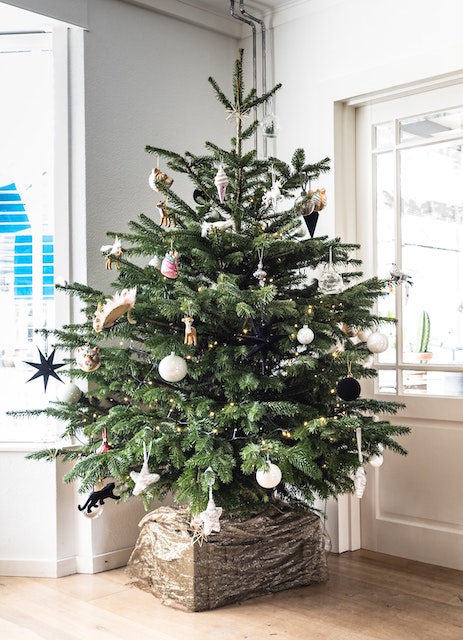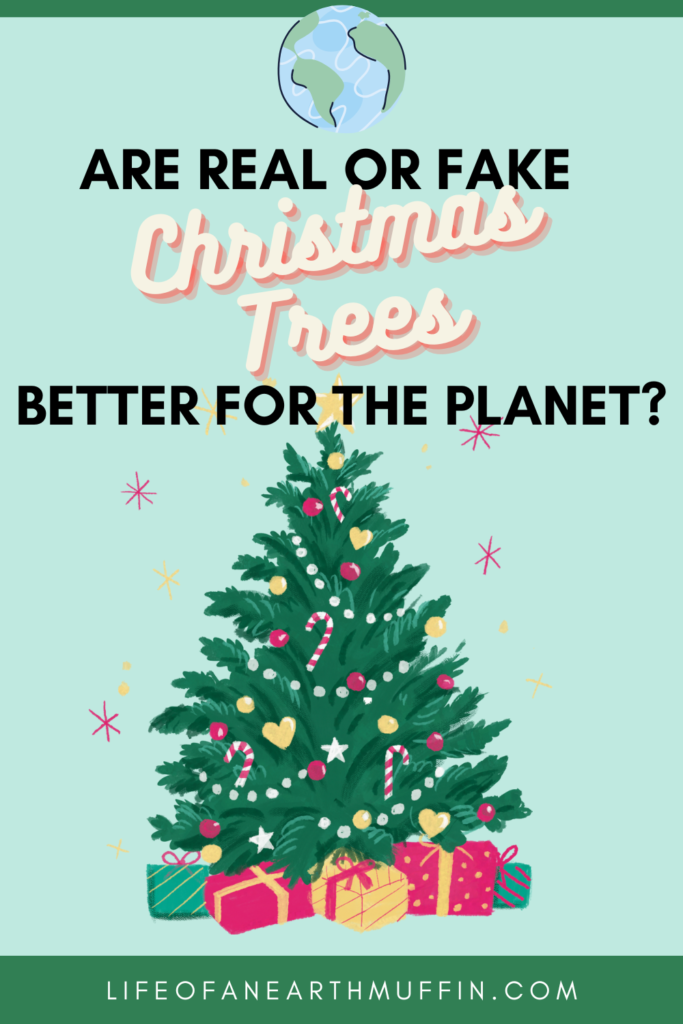Hey earth muffins! Let’s be honest, Christmas just wouldn’t be the same without a decorated tree. For those trying to live more sustainable lifestyles and have a zero waste Christmas, you might question if real or fake Christmas trees are better for the planet. The short answer: it really depend. There are pros and cons to both types, so keep reading to learn about the best options for each type of tree!

The Pros and Cons of Real Christmas Trees
Let’s start with real trees, as there is nothing like the smell of a Christmas tree in December! There are plenty of benefits to choosing this type. First, you are supporting local tree farms in your area which is good for your community’s economy. Growing a bunch of trees is great for the planet because, as they grow, they offset carbon in the air. Another positive to real trees is that they are biodegradable after the holidays. The tree can be composted into nutrient-rich soil or chipped up into wood pieces for use elsewhere. A lot of Christmas tree farms also replant multiple trees for each one sold; a positive for planet overall!
On the flip side, buying a real Christmas tree means you are cutting down a live tree each year. While these trees are grown to be sold this way, it would be helpful to Mother Earth for those trees to keep growing. There are also a lot of environmental costs in terms of water and pesticides to aid in the growing process. Don’t forget about transportation costs too!
The verdict: if you want a real Christmas tree, see if you can adopt a tree instead. These trees are sold in pots and are then replanted in the ground – and the next year they are used again! This reduces the negative impact of cutting down trees as well as the need to dispose of your tree after each Christmas.

The Pros and Cons of Artificial Christmas Trees
The first pro to a fake tree is that you can buy them to last a lifetime (or at least many years!). Investing in a high-quality tree allows you to reuse instead of having to purchase a new tree each year. There are even a few eco-friendly tree brands out there too! Unlike real trees, you also have the option to buy artificial trees secondhand. This reduces the environmental costs of producing a new tree since there are already so many out there. Lastly, some apartments/condos do not allow real trees – a fake one is a great alternative so that you don’t miss out on this holiday tradition!
The biggest con to an artificial tree is that it will end up in the landfill at some point. Even if you reuse it for years to come it will eventually end up in the dump. As we all know, landfills aren’t great for the environment. Fake trees also result in increased emissions from production and shipping; and they are made from a bunch of plastics too.
The verdict: if you are going to buy a fake tree, try to buy one that is secondhand! Take care of it and store it in a cool, dry place so that it will last many years.

So, Which is Better?
As you can tell, there are benefits and costs to either option. The real or fake Christmas trees debate has been argued for years, so I leave it up to you to decide which is best for you and your sustainable values! 😊 Personally, I opted for a high-quality fake tree that I plan on using for at least a few decades (as my partner is allergic to real Christmas trees, so it made the most sense for us). Are you more into real Christmas trees or artificial ones? Comment below and let me know what I missed in the real vs. artificial arguments!
Love,
Jenna ♥





I have a fake tree because I plan to use it for a very long time. My parents have had theirs for over 20 years! If you take good care of them, the trees can last a really really long time.